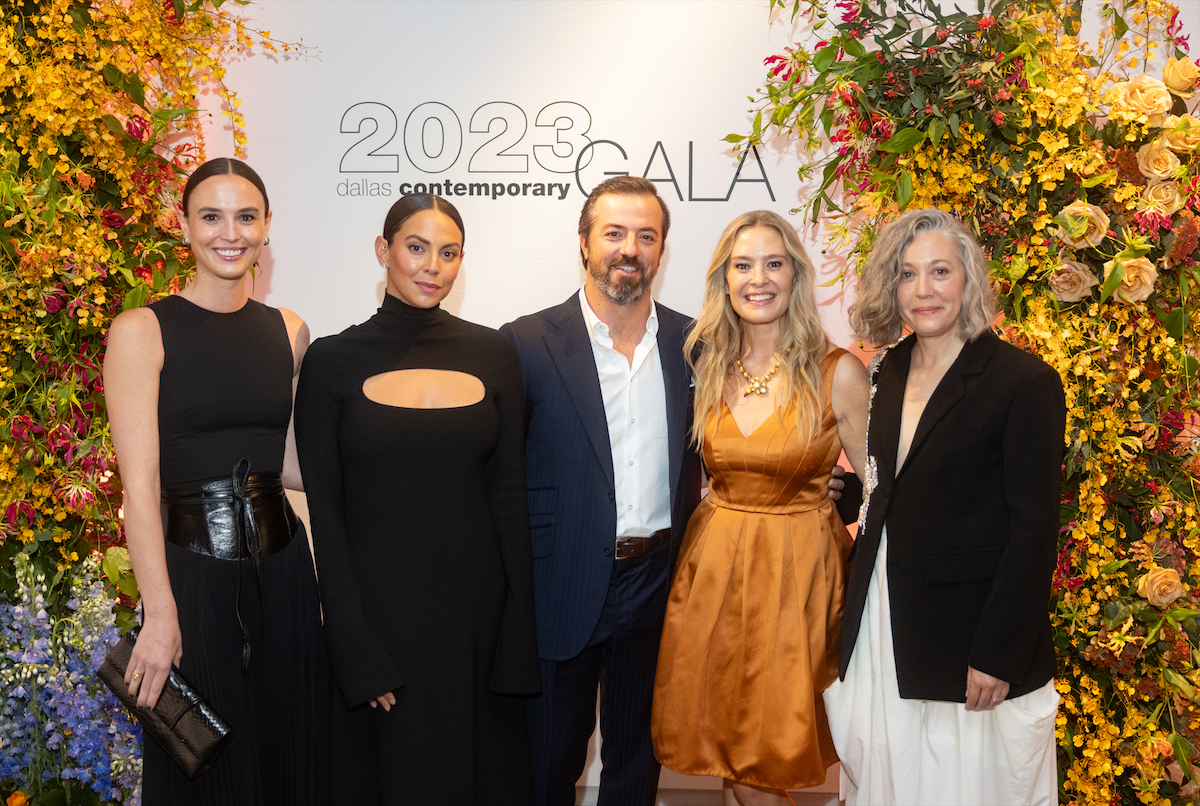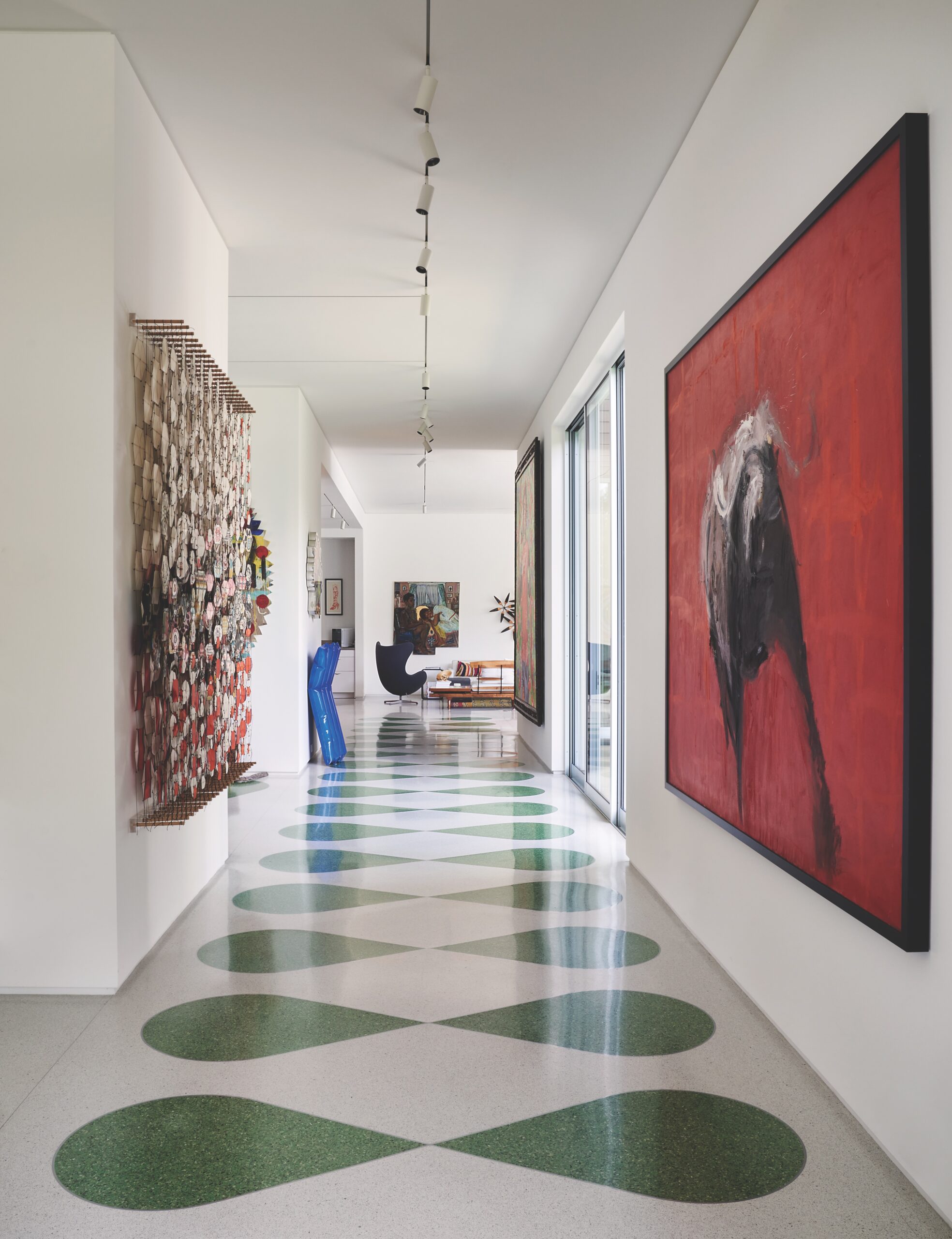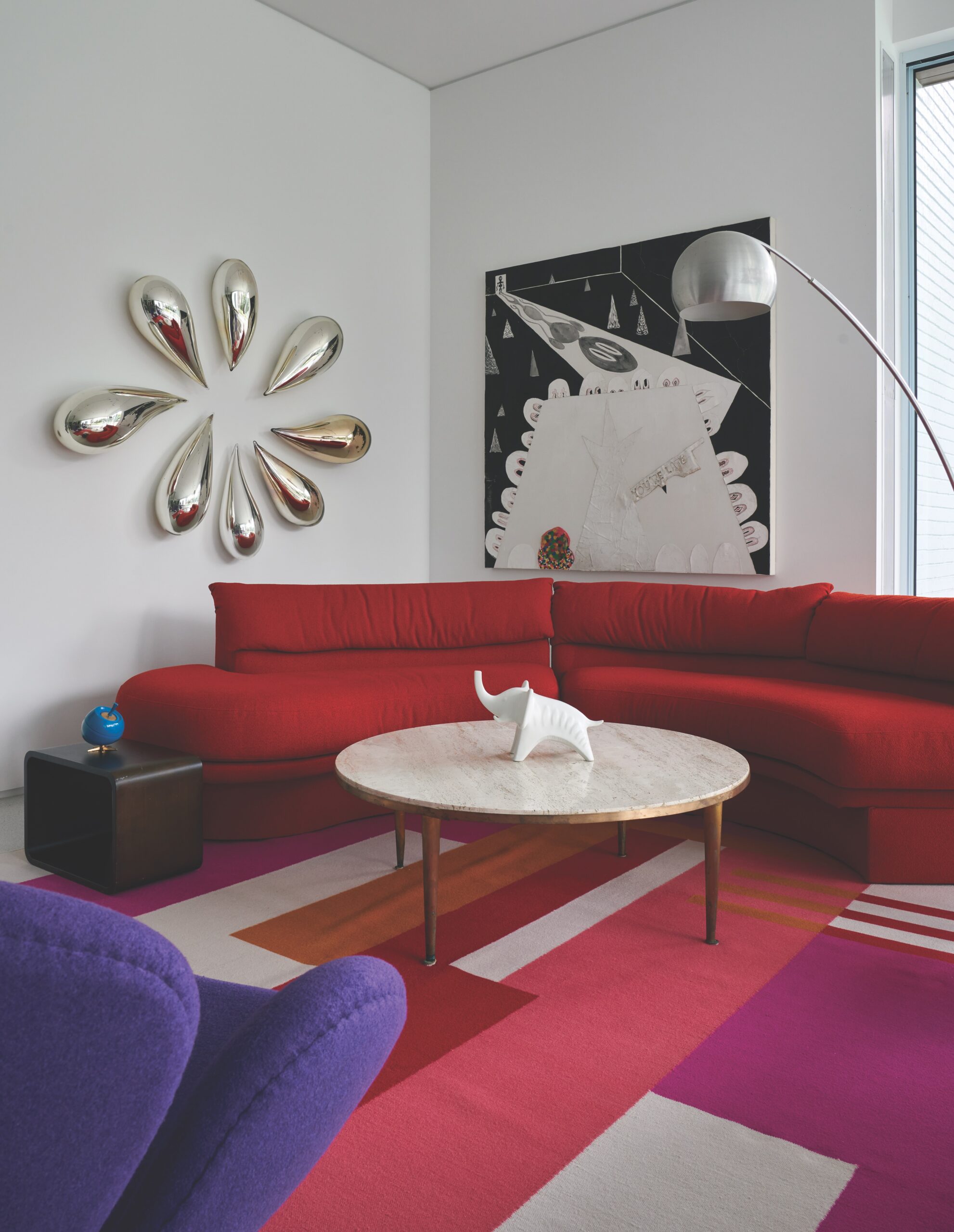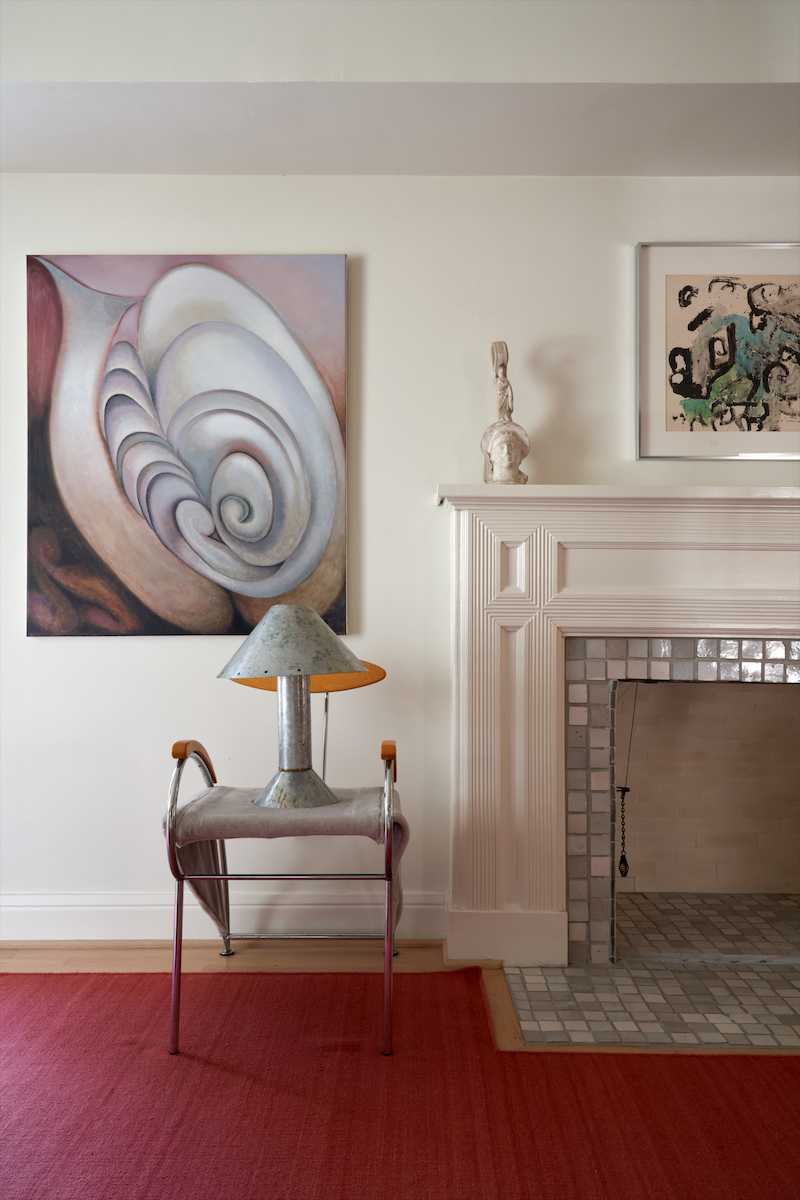
Ana Montiel painting from Gallery OMR, Mexico City. (Photo by Pär Bengtsson)
In her recurring column, “Social in Security,” modern etiquette ambassador and Bell’INVITO founder Heather Wiese walks us through a list of trusted tips you can rely on. Today’s topic: the etiquette of art buying and collecting.
Ready to collect? Art, like music, has the incredible power to transform your space, evoke emotions, and at times, serve as an investment. But for first-timers, it can often feel like a daunting labyrinth of galleries, and egos, and who’s who.
To start, let’s get the mindset right. Art collecting first and foremost is a journey of assembling pieces that make you happy. It shouldn’t feel like a maze. Following this read, you’ll be ready to wander into the eye-candy wonderland fully empowered to have a great time, and on a mission to enrich your soul, your surroundings, even your conversations and relationships.
To guide us, I’ll start by introducing you to a gentleman who is a collector, an artist, an educator, and a mentor. I’m thrilled for you to know more about William Atkinson, and to let you in on our chat regarding the demystification of collecting art.
During his early years, William worked as a street artist under a pseudonym. He combined abstract expressionism, street art, and graffiti assemblage to create public discourse anonymously. Atkinson’s guidance as an artist, collector, and educator is truly unique. Venture in. Let’s talk about the etiquette of art buying.

The ABCs of Art Collecting
I love a good mnemonic device. To help recall the points of navigation through this yo-yo of attraction and intimidation, I present the ABCs of Buying Art: A guide to seek out, inquire, and acquire a collection that you will cherish for years to come.
First, Always Be Curious.
Let me set the scene. Buying art, after all, is an adventure in the pursuit of beauty—whatever that looks like to you. For this conversation, I was invited to drinks and dinner by my hosts Jacquelin and William Atkinson at Golightly, Dallas’ newest private club, tucked away inside the Hotel Swexan. Jackets for gents, a collection of jaw-dropping interior spaces, ample city views, impeccable service details, and no phones allowed. The welcoming whisper of IYKYK glides through the ambiance of understated elegance. The call of a lost era. You have my attention.
I’ve been looking forward to this. I have so many questions for Jacquelin and William as experienced collectors, and for William specifically as an artist. I know I’ll have their advice for the power buyers as well as the “real talk” that extends to everyone regardless of budget, education, or influence. This is what I love about these two. We’re diving in.
My first question for William was where to start. William’s advice: start with you. Get out. Step into galleries. Ask questions. Visit art fairs. Look and ask questions until that voice inside you speaks up. Feel what resonates with you. The first step to becoming a confident art collector is to take a mini-immersion course in Know Thyself. This looks like walking into galleries and up to art that you find speaking to you. Make time. Keep it that simple.
Once you have a chance to interact, learn. Assuming smaller galleries and exhibitions, some questions here can act as a sample script. Where did the artist study? How did they come about producing this work? Does the artist live locally? How did the gallery come to know the artist? What is the artist’s usual medium? What serves as their inspiration? Is there something that makes their process or pieces particularly noteworthy?
In contrast, there are some rookie tells to avoid. In the beginning, asking is usually a better choice than commenting. When you find yourself ready to share your opinion, keep it positive or at the very least thoughtfully articulated. Refrain from speaking of something as “good,” “bad” or “not very good” as a rule. The beauty of art is that by design, it evokes a vast variance of opinions. Keep in mind that art culture is accepting of and as a general mindset, intrigued by them all. Have your opinion. Be open to and curious about other perspectives.

Second, Acquire Beneficial Connections.
Ready to dive in further? Jacquelin and William both recommended a plunge into books or articles to gain perspective. Attend lectures. Follow art blogs to gain a deeper understanding of various styles, movements, and the artists themselves. I recommend a book called Your Brain on Art by Susan Magsamen and Ivy Ross. Don’t have time for a full read? My favorite book hack is Blinkist. Download now. Thank me later. The Atkinsons recommended Artsy, which I immediately added to my repertoire. Knowing history, style names, and context will help you form a well-educated opinion you feel with confidence. It also gives you discussion points that serve to deepen your knowledge through these interactions.
When visiting a gallery or studio you like, sign up for updates. William emphasized a great point. These places aren’t selling your information to Amazon and the like, and they won’t spam you. They don’t benefit from selling contacts or have the resources to try. Gallery owners and artists are usually more than willing to engage in meaningful conversations about their work. It’s their passion.
As with any culture, using the proper lingo makes a difference in your experience. If you are curious about how much something costs, ask for a “price list.” He also recommends asking to speak to someone rather than assuming the person manning the front door or desk has all the answers. Don’t hesitate to have a conversation. My go-to line is usually, “Is there someone here who can tell me more about this piece?”
Rest assured that you are not implying intent to purchase by simply asking about a piece and collecting information. It’s important not to conflate personnel in a gallery with sales associates in a store. Art is a catalyst for new relationships, deeper understandings, and broader perspectives in general. Participate in the education and enjoy the process.
A note to the clever: it’s poor form to contact the artist directly if you found them through a gallery or some other means of representation. An ethical artist will redirect you back to the gallery that has invested in representing their work. If you meet an artist without representation, feel free to connect personally.

Last, Appreciate Basic Chemistry.
By now you understand that art is a deeply personal experience. Some etiquette advice: don’t complicate it with shoulds. Trust your instincts and buy what you love. Don’t be overly swayed by trends or the potential investment value of a piece (unless of course, you’re on the phone with your personal art-buyer sitting in the Sotheby’s auction). When your collection reflects your taste and passions, you light up when you share it. You raise the value tenfold by loving it.

Bonus Material: Appoint a Big-League Consultant.
If financial investment is your goal, this is the time a professional consultant is invaluable. Like anything you add to your investment portfolio, seek expert guidance. Educate yourself on Blue-chip art investing. Consider hiring an art consultant for making a significant investment and want to ensure the piece’s authenticity and provenance, or if you’re building a collection of a specific artist, style, or collecting around a particular movement. Because each consultant will have their own style and specialty, ask upfront how the consultant works, how they are paid, and what their specific specialty is. Given that the subjective and financial commitments are both significant, interview more than one to find the right fit.
In conclusion, buying art is not just a financial transaction; it’s a journey of self-discovery and self-expression. Educate yourself, ask questions, trust your instincts, and, when necessary, seek professional guidance, and watch yourself become a confident art collector. It will not only enhance your living space but provide a lifetime of beauty and enjoyment. Happy collecting! I hope to see many of your collections and to hear their stories.


























_md.jpeg)






